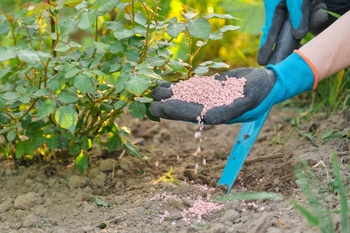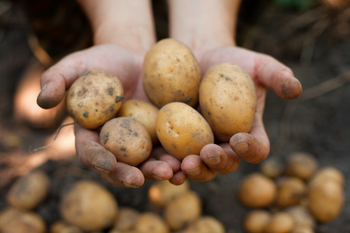We know how important wildlife is to our gardens, pollinating plants and helping to keep pests under control. And it works the other way, too - our gardens are also important to wildlife, providing food and shelter. Winter can be harsh for wildlife, with food scarce, and how we garden can help or hinder them. Here are our top tips on how to make your garden wildlife-friendly this winter.

9 Ways to Help Your Garden Wildlife in Winter
-
Don’t cut all your perennials back in the fall. Hollow flower stems provide shelter for spiders, insects, and other invertebrates over winter, so leave a few to stand until the weather starts to warm up in spring.
-
Put away the leaf blower and rake fallen leaves by hand. As well as adding to the problems of noise and air pollution, it’s thought that the use of leaf blowers is contributing to the drop in insect populations. The whole question of whether or not to rake up leaves at all is a tricky one. Left to lie, leaves will eventually break down, returning nutrients to the soil, and leaf piles provide a winter home for hedgehogs and insects. However, they also attract slugs and snails, so as a compromise, clear beds with incredibly precious, slug-prone plants and only let the leaves lie on beds containing shrubs and tougher plants.
-
Provide log piles or areas of long grass near ponds for amphibians like frogs and newts to shelter in over winter. Clear snow from frozen ponds so that light can get in and plants can photosynthesize, keeping the water oxygenated for pond wildlife.
-
Birds need plenty of food in winter to keep their body temperature up, so fill bird feeders with energy-rich seeds like sunflower hearts or hang-up suet balls. Top up feeders regularly so that birds don’t make wasted journeys to find food.
-
Keep birdbaths filled and make sure they don’t freeze over. As well as drinking water, birds also need to be able to keep their feathers clean to preserve their insulation.
-
Plant berry-bearing plants like holly, hawthorn, and crab apple trees. These provide food for birds and add beautiful fall and winter colour to the garden.
-
Don’t cut back ivy in the fall. A mature ivy, being evergreen, is a fantastic winter shelter for birds and insects, and the berries are a high-energy food source. Once spring arrives, you can cut back the ivy to keep it under control.
-
Plant flowers for winter pollinators. Hellebores, winter heather, mahonia, primroses, and crocuses are all excellent nectar sources for foraging bees and other pollinators in winter and early spring.
-
Mulch your beds in winter with a thick layer of organic material such as garden compost or well-rotted farmyard manure. This will be worked into the soil by worms and other organisms, and healthy soil means healthy plants and a healthy garden ecosystem.
If you’re looking for ways to help your garden wildlife this winter, visit our centre. We have everything you need, from bird feeders to winter plants, and our friendly staff are always happy to help!




